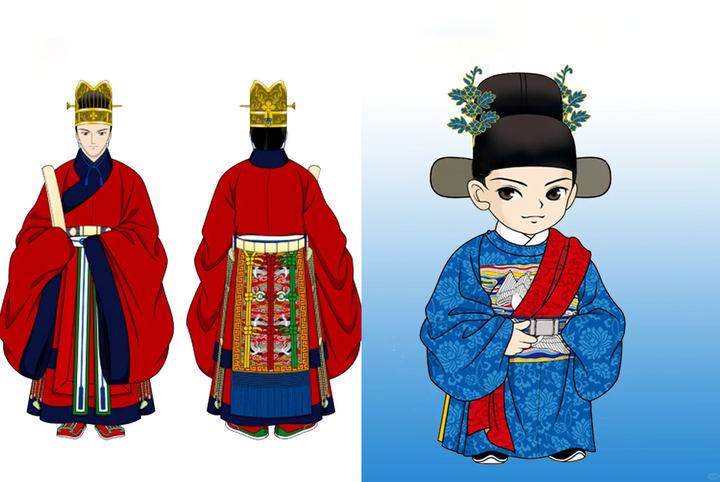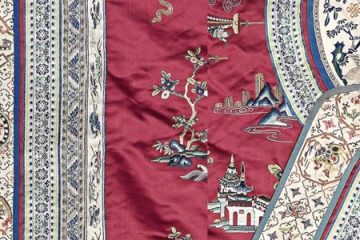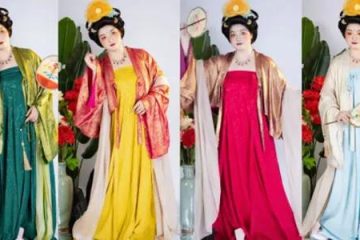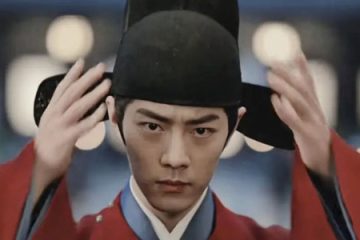What Did Ancient Chinese Top Scholar in Imperial Exam Wear?

The recent Chinese college entrance exam has finally concluded. Today’s Chinese students wear all kinds of sporty school uniforms, but do you know what ancient top imperial exam graduates wore? As the poem goes, “On the spring breeze, my horse’s hooves fly fast; a day to see all flowers of Chang’an.” Those who succeeded in the imperial exams didn’t wear the Western academic gowns we see today—they wore hanfu. Let’s make this clear: China’s academic regalia, rooted in hanfu traditions, should have its own cultural inheritance.
Ⅰ. Cultural Trivia
Let’s delve into the background of this poem! It comes from After Passing the Imperial Exam by Meng Jiao, a Tang-dynasty poet. Meng Jiao faced a bumpy career path in his early years, failing the imperial exams multiple times. Born into a poor family, a bureaucratic career was his key to changing fate, but he endured repeated setbacks.
He didn’t succeed until age 46, passing the jinshi (进士, the highest-degree holder in China’s imperial civil service exam, roughly equivalent to a doctoral graduate in modern terms) exam in the 12th year of the Zhenyuan reign (796 AD).
After becoming a jinshi, Meng Jiao finally escaped long-term hardship and repression, with his joy and relief reaching a peak. This poem was written when he rode through Chang’an streets after gaining fame, vividly expressing his elation and exhilaration at passing the exam.

Back to the main topic: during the Tang dynasty, the jinshi examination was the most challenging part of the imperial civil service exams, with an acceptance rate often below 10%. Those who passed were considered the“chosen ones of heaven” — earning not only an official post but also a significant rise in social status.

After achieving the titles of jinshi or zhuangyuan (状元, the top laureate of China’s imperial exam system, roughly equivalent to the valedictorian of a doctoral class), scholars would receive different official garments to mark their achievement. This honor was a once-in-a-lifetime event, and many took the opportunity to commission portraits of themselves in full regalia.
The zhuangyuan, in particular, was granted a specially awarded ceremonial Chinese outfit. This was a rare distinction, as the title of “Great Champion Under Heaven” (called “大魁天下” in Chinese ) represented the highest honor in the entire examination system.
II. The Official Attire of Jinshi Scholars
1. Jinshi Turban and Robe
Let’s go in order. A few days after the palace examination (usually three to five days later), on the day of the official results announcement, the newly selected jinshi scholars—including the top scorer—would change into a brand-new outfit issued by the Imperial Academy called the Jinshi Turban and Robe (“进士巾袍” in Chinese). They would then present themselves at court to formally express their gratitude, followed by a banquet in their honor.

This special outfit closely resembled a court robe lanshan (襕衫, and we have talked before) and was considered semi-official attire. It typically featured a dark blue gauze robe trimmed with deep green edges, a round collar, and wide sleeves.
On their heads, they wore a jinshi turban, similar in shape to the black gauze hats worn by officials. This turban had side flaps and was adorned with black silk streamers, along with flower-shaped hairpins and a pair of gold-and-silver plaques inscribed with the phrase “恩荣宴 (Enrong Banquet)”—symbols of honor and elevation, marking their formal entry into the official bureaucracy.

2. The Flower-Wearing Tradition
Men wearing flowers in their hair was documented as early as the Tang dynasty and became more popular during the Five Dynasties period. By the late Northern Song, it was a common practice—different flowers were worn according to the seasons. For those who passed the imperial exams, wearing flowers was part of the celebration.

As a mark of pride, many officials had portraits made of themselves in jinshi attire, often with flowers in their hair—an ancient version of a graduation photo!

The top scorer of the imperial exam (zhuangyuan) received a special honor: a set of ceremonial court attire personally bestowed by the emperor. For example, Emperor Zhu Yuanzhang once granted such robes to the newly named zhuangyuan Wu Bozong (吴伯宗) in the third month of a particular year, along with formal recognition of the other successful candidates.
This imperial gift of court dress later became a tradition, passed down by emperors of succeeding dynasties.

According to the formal dress system of the Ming dynasty, the full set of imperially bestowed court attire included: a ceremonial crown, a red gauze robe, matching skirt, a white gauze undergarment, a red gauze apron, a broad sash, leather belt, jade pendants, decorative ribbons, white socks, and black cloud-toed shoes. The standard footwear was typically black, though later variations included green shoes with red trim around the cloud-shaped toe.
After receiving the robes, recipients would take part in the Rite of Offering to the First Teacher on an appointed day. The zhuangyuan, leading the group, would wear this ceremonial attire to pay respects to Confucius, be officially granted a civil rank, and afterward change into regular dress. Their everyday official outfit was a blue, round-collared robe with a sixth-rank egret insignia patch, marking a standard entry-level civil service position.
In certain ceremonial occasions, a zhuangyuan in the Ming dynasty could also wear a more formal scarlet round-collared hanfu embroidered with the sixth-rank egret badge, which can be seen in surviving portraits and Ming dynasty paintings.

It’s worth noting that much of what we know today is based on Ming dynasty records and artifacts, which are relatively well-preserved and thoroughly documented. As a result, modern reenactments, cultural events, and historical dramas often rely on Ming-style dress systems, even when the story is set in the Song dynasty—pairing Song-style headwear with Ming dynasty costume standards. In the actual Song dynasty, there were indeed some differences in official attire, especially in terms of colors and ranks.

Summary

Many period dramas mistakenly dress Song Dynasty zhuangyuan in Ming-style red auspicious robes. While “borrowed red” attire might appear at some banquets for visual distinction, the accurate garb was dark blue jinshi robes (with green robes for formal events). Use this to differentiate historical details!
Learn about the top scorer’s official attire and embrace good fortune! Wishing all students all around the world a soaring journey ahead, may your ambitions take flight and dreams unfold splendidly!



0 Comments